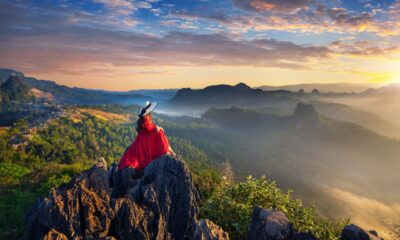Travel
The Ultimate Gear Guide for Alpine Ice Hacking Enthusiasts
Published
8 months agoon
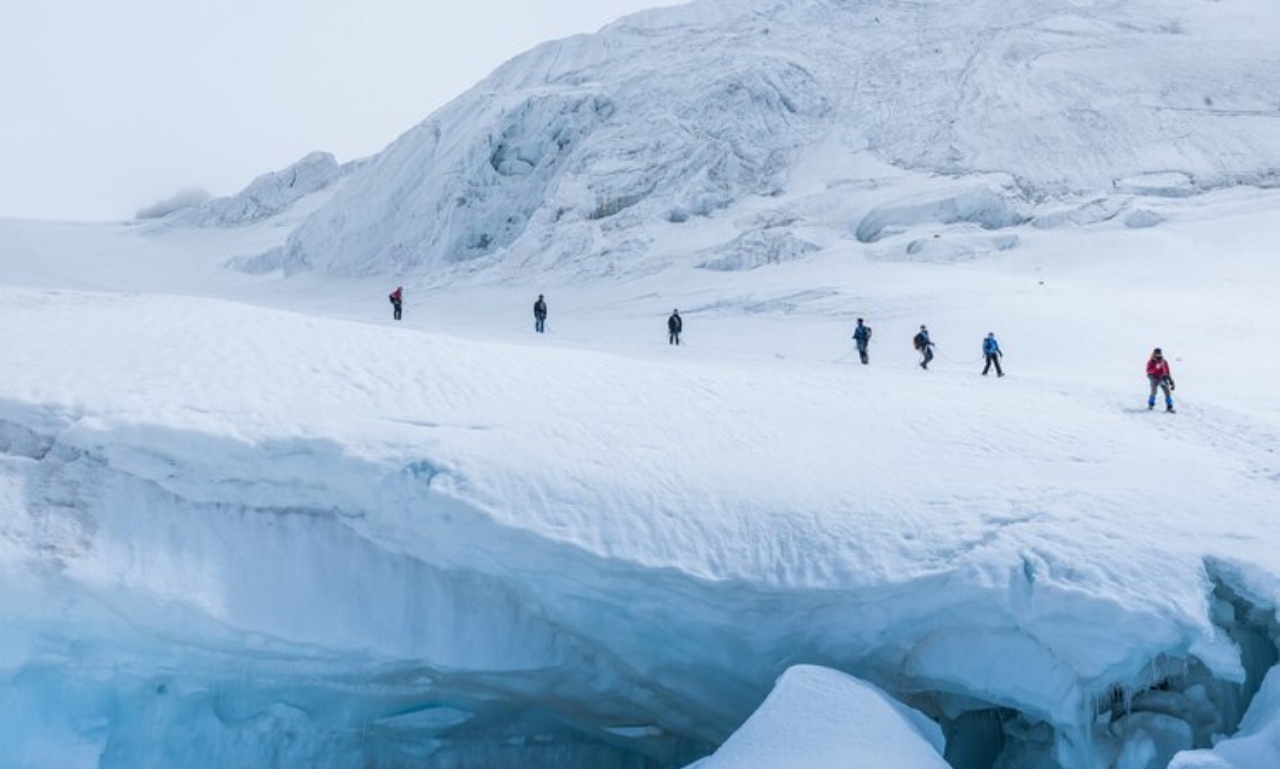
Welcome to the adrenaline-pumping world of Alpine Ice Hacking, where icy cliffs and frozen waterfalls become your playground! If you’re a thrill-seeker looking to conquer challenging ice formations in the mountains, this ultimate gear guide is your ticket to an unforgettable adventure. From choosing the perfect ice axes to mastering essential safety precautions, we’ve got you covered every step of the way. So grab your gear and get ready for an exhilarating journey into the heart of winter wonderland!
Essential Gear for Alpine Ice Hacking
Ready to embark on your next alpine ice hacking adventure? Ensuring you have the right gear is crucial for a successful and safe outing. Here are some essential items you’ll need:
First up, ice axes and tools are your trusty companions on the icy terrain. Choose ones that are lightweight yet durable, with a comfortable grip for those long climbs.
Next, don’t forget about crampons – these spiked attachments will provide traction on slippery surfaces, allowing you to move confidently across the ice.
When it comes to clothing and protective gear, opt for insulated layers that wick away moisture to keep you warm and dry in extreme conditions. Don’t skimp on gloves and goggles either!
Other necessary equipment includes a sturdy helmet to protect against falling debris, a harness for added safety during climbs, and a reliable backpack to carry all your essentials.
Stay tuned for more tips on maintaining your gear and staying safe while enjoying the thrill of alpine ice hacking!
Choosing the Right Ice Axes and Tools
Choosing the right ice axes and tools is crucial for alpine ice hacking enthusiasts. When selecting ice axes, consider factors like weight, length, and design to match your climbing style. Look for a durable construction that can withstand harsh conditions.
Ensure the grip of the ice axe feels comfortable in your hand for extended use on challenging routes. Opt for tools with adjustable features to customize them according to your preferences and needs while navigating icy terrains.
Moreover, having a variety of tools, such as ice screws, pick weights, and adzes can enhance your versatility on different types of ice formations. It’s essential to invest in high-quality gear that offers reliability and performance when faced with demanding situations in alpine environments.
By carefully choosing the right ice axes and tools tailored to your skill level and objectives, you can elevate your alpine ice hacking experience to new heights.
Selecting the Perfect Crampons
When it comes to alpine ice hacking, selecting the perfect crampons is essential for your safety and performance on the ice. Crampons are metal spikes that attach to your boots, providing traction on slippery terrain.
There are different types of crampons available, such as strap-on or step-in models. Strap-on crampons are more versatile and can be used with various boot styles, while step-in crampons offer a more secure fit but require specific compatible boots.
Consider the material of the crampons – steel is durable and great for mixed climbing, while aluminum is lighter but may not withstand heavy use on hard ice. The number of points also matters; 12-point crampons provide stability on steep slopes, while 10-point ones are better suited for less technical terrain.
Ensure that your chosen crampons fit snugly and securely on your boots without any wobbling or shifting during use. Test them out in different conditions to ensure they perform well before heading out onto challenging alpine routes.
Clothing and Protective Gear
When it comes to Alpine Ice Hacking, having the right clothing and protective gear is crucial for your safety and comfort in challenging mountain environments. Start with a good base layer that wicks away moisture to keep you dry and warm. Insulating layers like fleece or down jackets help retain body heat in cold conditions.
A waterproof and windproof outer shell is essential to protect you from harsh weather elements such as snow, sleet, and strong winds. Don’t forget about durable gloves that provide both dexterity for handling tools and warmth for your hands. A sturdy helmet is a must-have to protect your head from falling ice or rock debris.
Investing in quality goggles can shield your eyes from snow glare, UV rays, and icy particles while providing clear vision on bright days. Consider wearing gaiters to prevent snow from entering your boots during deep snow trekking expeditions. Choose clothing made of breathable materials that offer freedom of movement without compromising protection against the elements.
Other Necessary Equipment
When gearing up for alpine ice hacking, it’s crucial to consider a few other necessary items besides the obvious tools. One essential piece of equipment is a reliable backpack with ample space to carry all your gear comfortably. Look for one with durability and multiple compartments for organization.
Another must-have item is a sturdy helmet to protect your head from falling debris or accidental impacts during your climb. Investing in high-quality gloves will not only keep your hands warm but also provide grip and protection when handling sharp ice tools.
Carrying extra layers of clothing, including waterproof jackets and pants, can be a lifesaver in unpredictable mountain weather conditions. Don’t forget about hydration – pack a water bottle or hydration system to stay hydrated throughout your adventure.
Ensure you have an emergency kit containing essentials like first aid supplies, a headlamp, and navigation tools in case of unforeseen circumstances while out on the icy terrain.
Tips for Properly Maintaining Your Gear
Proper maintenance of your alpine ice hacking gear is crucial to ensure its longevity and peak performance. After each outing, take the time to clean off any dirt, snow, or ice from your equipment using a soft brush or cloth. This helps prevent corrosion and damage caused by debris.
Inspect your gear regularly for any signs of wear and tear such as cracks, dents, or bent components. Replace any damaged parts immediately to avoid accidents during your next adventure on the ice. Sharpen your ice axes and crampons as needed to maintain their effectiveness on slippery surfaces.
Store your gear in a cool, dry place away from direct sunlight to prevent degradation of materials over time. Consider investing in protective cases or bags to keep everything organized and protected when not in use. By taking these simple steps, you can prolong the life of your gear and stay safe while tackling challenging alpine environments.
Safety Precautions for Alpine Ice Hacking
When it comes to Alpine ice hacking, safety should always be a top priority. The high-risk nature of this activity demands careful consideration and preparation before hitting the icy slopes.
First and foremost, ensure you have proper training and experience in ice climbing techniques. Familiarize yourself with self-arrest procedures and crevasse rescue methods to handle unexpected situations effectively.
Always check the weather conditions and avalanche risk levels before heading out. Understanding the terrain and potential hazards can help prevent accidents or mishaps during your climb.
Invest in high-quality protective gear such as helmets, harnesses, gloves, and goggles to shield yourself from any falls or flying ice particles. Additionally, carry a first aid kit and emergency supplies in case of injuries or emergencies.
Communicate with your climbing partners effectively using radios or hand signals to stay connected on the mountain. Establishing clear communication channels can prevent misunderstandings or confusion during challenging climbs.
Remember that safety is a shared responsibility among all members of the team. Regularly check each other’s equipment for any signs of wear or damage that could compromise safety while on the mountain.
Recommended Brands and Products
When it comes to alpine ice hacking, having the right gear can make all the difference in your experience. There are several reputable brands that offer top-quality equipment for this thrilling activity. Black Diamond is a popular choice among ice climbing enthusiasts for their durable ice axes and crampons. Petzl is another well-known brand known for their high-performance technical gear, including harnesses and helmets designed specifically for ice climbing.
For those looking for reliable clothing options, Arc’teryx and Patagonia offer a range of insulated jackets, waterproof pants, and gloves to keep you warm and dry in harsh alpine conditions. When it comes to protective gear like helmets and goggles, Mammut and Outdoor Research are trusted brands that prioritize safety without compromising on comfort or style.
Investing in quality gear from these recommended brands will not only enhance your performance on the ice but also ensure your safety during challenging climbs.
Conclusion
As you embark on your alpine ice hacking adventures, remember that having the right gear is essential for both performance and safety. Invest in high-quality equipment from reputable brands to ensure reliability in challenging conditions. Regularly maintain and inspect your gear to prolong its lifespan and effectiveness.
By carefully selecting the appropriate ice axes, crampons, clothing, and protective gear, you can enhance your experience on the icy slopes of alpine environments. Prioritize safety precautions at all times and stay informed about current conditions before heading out. With the ultimate gear guide for alpine ice hacking enthusiasts at your disposal, you’re all set to conquer the frozen landscapes with confidence and skill. So bundle up, grab your tools, and embrace the thrill of conquering nature’s icy challenges!
You may like
Travel
Tourism: A Gateway to Cultural Exchange and Economic Growth
Published
4 weeks agoon
October 23, 2024Tourism has long been a driving force behind economic growth and cultural exchange. The exploration of new places, understanding diverse cultures, and participating in leisure activities in unfamiliar environments are all essential components of tour-ism. As a key player in the global economy, tourism influences many sectors such as hospitality, transportation, and entertainment, while simultaneously promoting the cultural heritage of the host destinations. This article explores the importance of tourism, the various types of tourism, and the challenges facing this ever-growing industry.
The Importance of Tourism
Economic Impact
Tourism is one of the largest global industries, contributing significantly to the GDP of many countries. In 2019, the travel and tourism industry generated $9.2 trillion globally and supported 330 million jobs. Countries such as France, Spain, the United States, and Thailand are prime examples of destinations where tour-ism is a major economic contributor. The industry creates jobs across various sectors, from accommodation and transportation to food services and retail. Local businesses benefit greatly from tourist spending, creating a multiplier effect that stimulates the entire economy.
Moreover, tour-ism is a major source of foreign exchange, helping countries to diversify their income sources. For many developing nations, tourism serves as a critical engine for economic development, attracting international investments in infrastructure, services, and facilities. Governments often invest in airports, roads, and other forms of infrastructure to cater to tourists, which in turn benefits local communities.
Cultural Exchange and Preservation
Beyond its economic advantages, tour-ism fosters cultural exchange and understanding. Tourists, by exploring new cultures, traditions, and lifestyles, gain insights into ways of life that may be vastly different from their own. This interaction helps break down barriers, leading to more tolerance and acceptance among diverse communities. The cultural exchange inherent in tourism can also lead to the preservation and promotion of local heritage, arts, and traditions. For instance, many local festivals, craft markets, and traditional performances gain visibility through tourism, ensuring their survival in a rapidly modernizing world.
Environmental and Ecotourism
Tourism also plays a significant role in environmental conservation. With the rise of ecotourism, tourists are increasingly drawn to natural destinations such as national parks, rainforests, and marine reserves. Ecotourism promotes the idea that nature should be conserved and appreciated responsibly. Many ecotourism initiatives support conservation efforts, provide jobs for local communities, and educate travelers about the importance of protecting biodiversity. Popular ecotourism destinations include Costa Rica, Kenya, and New Zealand, where sustainable tourism practices are implemented to minimize environmental impacts.
Types of Tourism
Leisure Tourism
Leisure tour-ism remains the most popular form of travel. It includes activities such as beach holidays, cruises, city tours, and theme park visits. Whether travelers are looking for relaxation or adventure, leisure tourism offers a wide range of experiences catering to all tastes. Iconic destinations such as the beaches of Hawaii, the bustling streets of Paris, and the vibrant markets of Marrakech continue to attract millions of tourists each year.
Cultural Tourism
Cultural tour-ism is focused on experiencing the customs, history, art, and heritage of different destinations. Travelers seeking deeper connections with the places they visit often choose this type of tourism. For example, visiting ancient temples in Japan, exploring the ruins of Machu Picchu, or attending traditional ceremonies in India are all popular cultural tour-ism activities. This form of tourism promotes greater understanding and appreciation of different cultures, while also contributing to the preservation of cultural assets.
Adventure Tourism
For the thrill-seekers, adventure tourism provides excitement through activities such as hiking, rafting, scuba diving, and safaris. Adventure tourists are drawn to destinations that offer unique physical challenges and a close connection with nature. Countries like Nepal, known for trekking in the Himalayas, and Australia, famous for diving in the Great Barrier Reef, have become hotspots for adventure tour-ism. This sector often overlaps with ecotourism, as many of these activities occur in natural settings.
Medical Tourism
Medical tour-ism has emerged as a growing trend, where individuals travel to other countries to receive medical treatments or procedures. This type of tourism is often driven by the need for lower costs, better quality care, or treatments not available in one’s home country. Countries such as Thailand, India, and Mexico have become leading destinations for medical tourists due to their advanced healthcare systems and affordable prices. Medical touri-sm not only provides patients with necessary treatments but also boosts the economies of the host countries.
Business Tourism
Business tour-ism involves travel for work-related activities, such as attending conferences, meetings, or trade fairs. Although business travelers may not have much leisure time during their trips, many extend their stays to explore the destination once their professional commitments are complete. Cities such as London, New York, and Dubai are popular business tourism hubs, hosting major international events that attract thousands of professionals from around the world.
Challenges Facing Tourism
Overcrowding and Overtourism
Overtourism is one of the biggest challenges facing the tour-ism industry today. Popular tourist destinations often struggle with overcrowding, which can lead to the degradation of natural environments and cultural sites. Venice, Machu Picchu, and the Galápagos Islands are prime examples of destinations where the influx of tourists has put significant strain on local resources. In response, some governments have implemented restrictions on the number of visitors allowed, and others are promoting alternative, less-frequented destinations to distribute the flow of tourists more evenly.
Environmental Degradation
While tourism can promote environmental conservation, it can also contribute to its destruction. Large-scale tour-ism development projects, such as the construction of hotels, airports, and resorts, can lead to habitat loss, pollution, and the depletion of natural resources. Unsustainable tourism practices, such as littering, improper waste management, and overuse of water resources, can severely impact fragile ecosystems. Therefore, it is essential for both tourists and tourism operators to prioritize sustainability and adopt eco-friendly practices.
Impact on Local Communities
Tourism can sometimes disrupt local communities, particularly in cases where rapid development leads to displacement, cultural commodification, and economic inequality. In some regions, the growth of tour-ism has resulted in skyrocketing property prices, pushing out local residents in favor of luxury resorts and hotels. This can create resentment and tension between locals and tourists. To mitigate these effects, community-based tourism initiatives are being promoted, which encourage local ownership and control of tourism enterprises.
The Effects of Global Crises
Global crises such as pandemics, economic recessions, and political instability can have a significant impact on the tourism industry. The COVID-19 pandemic, for example, brought the global tour-ism industry to a standstill, with international arrivals declining by 74% in 2020. This unprecedented crisis led to massive job losses, business closures, and a sharp decline in travel demand. As the world recovers, the tour-ism industry must adapt to new realities, such as changing consumer preferences and stricter health and safety protocols.
Conclusion
Tourism is a dynamic and multifaceted industry that holds great potential for economic development, cultural exchange, and environmental conservation. While it offers numerous benefits to both tourists and host communities, it also presents challenges that need to be addressed through sustainable practices and responsible travel. By fostering a balance between economic growth, cultural preservation, and environmental stewardship, tourism can continue to thrive as a force for positive change in the world.
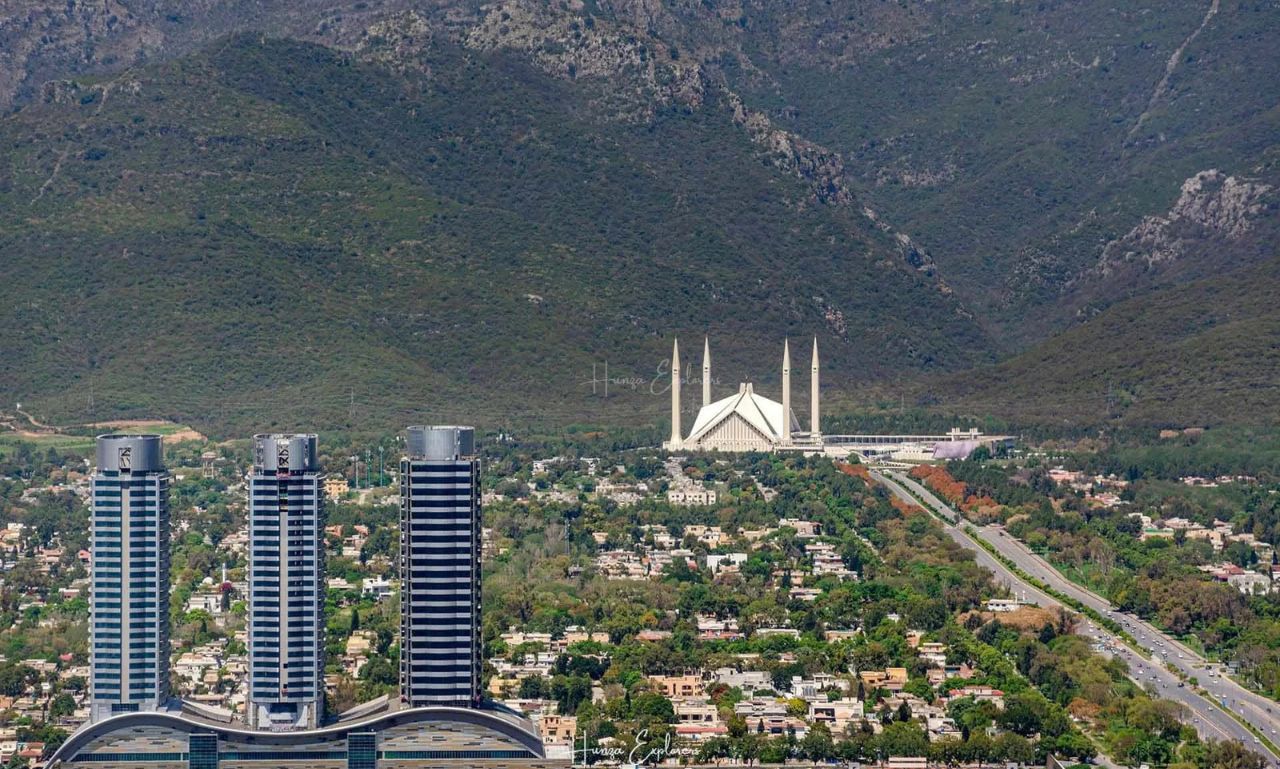
Introduction
Islamabad, the capital city of Pakistan, is known for its modern infrastructure, scenic beauty, and serene environment. Established in the 1960s, the city was designed to replace Karachi as the capital of Pakistan, and it represents the country’s vision of modernity and urban development. Islamabad stands out due to its organized layout, lush greenery, and its proximity to the Margalla Hills, making it one of the most picturesque capitals in the world.
History and Foundation
Islamabad’s foundation was laid in 1960 under the government of General Ayub Khan. The decision to move the capital from Karachi was driven by several factors, including the need for a central location, climate suitability, and the desire to move the capital away from the coast, reducing vulnerabilities to foreign invasion. Renowned Greek architect and town planner, Constantinos Apostolou Doxiadis, designed the city’s master plan.
Before its establishment, the area where Islamabad now stands was sparsely populated with small villages and ancient settlements. The site was selected near Rawalpindi, which served as the interim capital during the transition period.
Geography and Climate
Islamabad is located in the northern part of Pakistan, nestled against the foothills of the Margalla Hills, which are part of the Himalayan range. The city is spread over an area of 906 square kilometers and lies at an elevation of 507 meters (1,663 feet) above sea level. Its location provides residents with stunning views of the surrounding natural beauty.
Islamabad experiences a humid subtropical climate. The city enjoys four distinct seasons, with hot summers, mild winters, a rainy monsoon period, and a pleasant spring. The Margalla Hills significantly influence the weather, keeping the climate relatively cooler and more moderate compared to other cities in Pakistan, especially in summer.
City Layout and Architecture
Islamabad’s urban planning is renowned for its sector-based layout, ensuring well-organized residential, commercial, and governmental areas. The city is divided into eight main zones, including administrative, diplomatic, residential, commercial, educational, and rural areas, with sectors identified by letter and number combinations.
Each sector is self-sufficient, equipped with basic amenities such as markets, mosques, parks, and schools. Major commercial hubs include Blue Area, which runs parallel to the central sectors, and is home to offices, malls, and banks.
The architecture in Islamabad blends modernity with traditional Islamic styles. Some notable buildings include:
- Faisal Mosque: The largest mosque in Pakistan and an iconic symbol of the city, this mosque was designed by Turkish architect Vedat Dalokay. Its unique design combines modernist lines with traditional Islamic elements, creating a stunning structure that stands out against the backdrop of the Margalla Hills.
- Pakistan Monument: A symbol of the unity of the Pakistani people, this monument in Shakarparian Park represents the four provinces and three territories of Pakistan. It is shaped like a blooming flower, symbolizing the nation’s growth and unity.
Culture and Lifestyle
Islamabad is known for its calm and laid-back lifestyle. In contrast to the hustle and bustle of Pakistan’s larger cities like Karachi and Lahore, Islamabad offers a more serene environment. The city is often referred to as “the green city” due to its vast expanses of parks, forests, and tree-lined streets. Popular parks include Fatima Jinnah Park, Daman-e-Koh, and the Rawal Lake Park.
Being the capital city, Islamabad is home to a diverse population that includes diplomats, expatriates, and people from various regions of Pakistan. This diversity is reflected in the city’s culture, food, and festivals. While traditional Pakistani cuisine is available everywhere, Islamabad also boasts a range of international restaurants and cafes.
Islamabad’s cultural scene includes art galleries, theaters, and music festivals. Lok Virsa Museum and Pakistan National Council of the Arts (PNCA) are key cultural institutions, promoting local arts and heritage. The city also hosts various cultural events like the Pakistan National Folk Festival and literature festivals.
Economy and Education
Islamabad is a significant economic hub in Pakistan, especially for government services and the information technology sector. Its economy is largely driven by the federal government, embassies, and multinational corporations. The city’s IT sector is growing rapidly, with the establishment of IT parks and companies such as PTCL, Mobilink, and other software firms.
Education is another highlight of Islamabad. It is home to some of the most prestigious educational institutions in Pakistan, including Quaid-e-Azam University, the National University of Sciences and Technology (NUST), and International Islamic University. The presence of high-quality schools, colleges, and universities attracts students from all over the country.
Tourism and Attractions
Islamabad is a gateway to some of Pakistan’s most beautiful northern areas, but the city itself has much to offer visitors:
- Daman-e-Koh: A scenic viewpoint located in the Margalla Hills, offering panoramic views of Islamabad, especially at sunset.
- Rawal Lake: A man-made lake that provides a peaceful retreat for picnics, boating, and bird-watching.
- Saidpur Village: A centuries-old village at the foot of the Margalla Hills, restored to showcase traditional architecture and culture, with restaurants and cultural exhibits.
- Shah Faisal Mosque: A must-visit for tourists due to its architectural beauty and cultural significance.
Additionally, Islamabad’s proximity to Murree, Nathia Gali, and other hill stations makes it an ideal base for tourists seeking both urban and natural experiences.
Challenges and Future Prospects
While Islamabad is one of the most well-planned cities in Pakistan, it still faces challenges. Urban sprawl, rapid population growth, and the pressure on infrastructure are concerns for city planners. However, efforts are ongoing to expand the city’s facilities while maintaining its green character.
In recent years, Islamabad has seen an increase in high-rise buildings and real estate development. As Pakistan’s IT sector grows, Islamabad is becoming a hub for startups and tech companies, leading to a more vibrant economic future for the city.
Conclusion
Islamabad represents the modern face of Pakistan, blending contemporary development with the country’s rich cultural heritage. It is a city that values both progress and nature, offering a peaceful yet dynamic lifestyle to its residents and visitors. As it continues to grow, Islamabad is poised to remain a key player in Pakistan’s political, economic, and cultural landscape.
Travel
Abbottabad: A Scenic City with a Rich Historical Legacy
Published
1 month agoon
October 22, 2024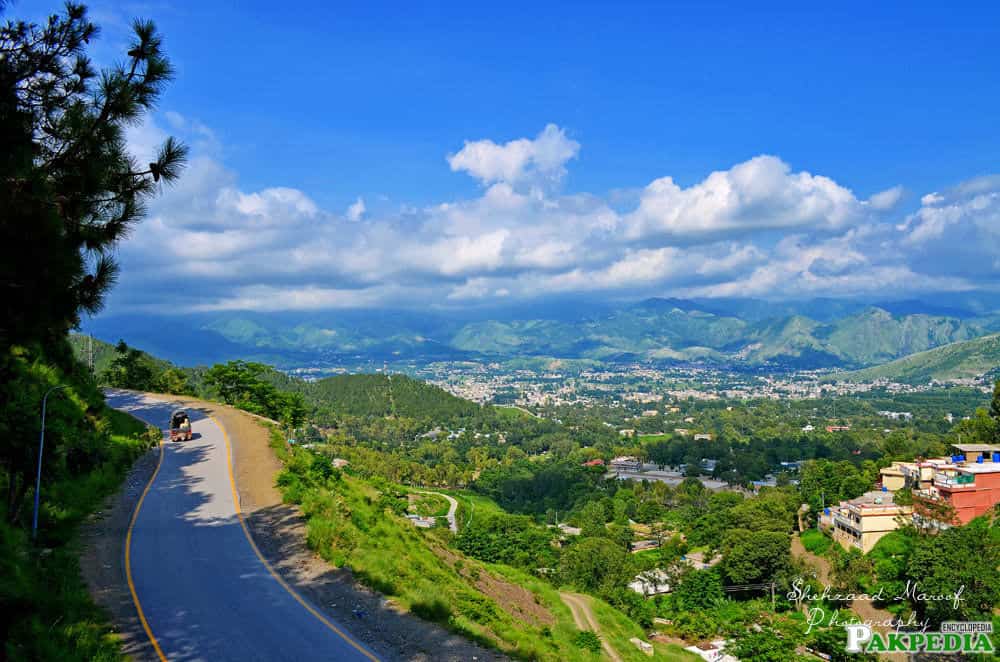
Abbottabad, a picturesque city in the Hazara region of Pakistan’s Khyber Pakhtunkhwa province, stands out for its lush greenery, pleasant climate, and rich historical significance. Situated at an elevation of about 1,260 meters (4,140 feet), the city is surrounded by the scenic Sarban hills, drawing tourists and serving as a gateway to northern areas like Naran, Kaghan, and Gilgit-Baltistan.
Historical Background
In 1853, Major James Abbott, a British officer of the East India Company, founded Abbottabad. He established it as a military cantonment and played a key role in shaping its early development. Deeply moved by the beauty of the area, Major Abbott expressed his affection for the city in a heartfelt poem, lamenting his departure. Abbottabad quickly grew in prominence as a garrison town, largely due to its strategic location.
During British rule, Abbottabad became a center for military and administrative activities in the region. Even today, the city retains its historical military significance as it hosts the Pakistan Military Academy (PMA) in Kakul, where officers of the Pakistan Army are trained. This prestigious institution is a key part of the city’s identity.
Geography and Climate
Abbottabad enjoys a temperate climate with four distinct seasons. The summers are mild and pleasant, making it an ideal summer retreat for tourists escaping the heat of the plains. Winters can be cold, with occasional snowfall, transforming the city into a winter wonderland. The city’s moderate climate and its verdant surroundings contribute to its reputation as a “city of pines” due to the abundance of pine trees in and around the area.
Abbottabad’s geographical location is a major factor in its appeal. Situated along the Karakoram Highway, the city serves as a gateway to the northern areas of Pakistan, including the stunning landscapes of the Kaghan Valley, the Karakoram mountain range, and even the challenging trek routes leading to K2, the second-highest mountain in the world. As a result, it is often used as a base by adventure enthusiasts and tourists heading to these areas.
Education and Development
Abbottabad has also established itself as an educational hub. Apart from the Pakistan Military Academy, the city is home to several prestigious educational institutions, including the Ayub Medical College, COMSATS University, and the Army Burn Hall College, which cater to students from all over Pakistan.
The city’s infrastructure has developed significantly over the past few decades. While it still maintains its old-world charm with colonial-era bungalows and tree-lined streets, modern developments, including shopping malls, restaurants, and hotels, have sprung up, making it a blend of the old and new.
Tourism and Attractions
Tourism is a vital part of Abbottabad’s economy. Its natural beauty, cool climate, and historical significance attract both domestic and international visitors. Some of the popular tourist destinations in and around Abbottabad include:
- Shimla Hill: A scenic hilltop offering panoramic views of the city and its surroundings. It is a popular spot for hiking and picnics.
- Ilyasi Masjid: A historical mosque built over a natural spring. The mosque is known for its architectural beauty and the adjacent water reservoir, where visitors often enjoy a swim.
- Thandiani: Located around 31 kilometers from Abbottabad, Thandiani is a small hill station offering breathtaking views of the surrounding mountains and valleys. It is particularly popular during the summer months.
- Harnoi: A serene valley near Abbottabad, famous for its freshwater streams, picnic spots, and lush greenery.
- Ayubia National Park: Located near the city, this park is home to various wildlife species. Offers trekking paths like the famous “Pipeline Track,” providing scenic views of the forested hills.
Abbottabad’s Role in Recent History
In recent times, Abbottabad came into the international spotlight in May 2011 when Osama bin Laden. The leader of the terrorist organization Al-Qaeda was found and killed in a secret U.S. Navy SEAL operation in the city. The operation took place in a compound located near the Pakistan Military Academy in Kakul. This incident drew significant global media attention to Abbottabad. However, it has since returned to its quieter and more peaceful existence.
Conclusion
Abbottabad is a city of contrasts—a blend of colonial history and modern development. Serene tourist destination, and a center of military training. Its pleasant weather, scenic landscapes, and historical charm make it a unique city in Pakistan. Drawing visitors who seek natural beauty, history, and adventure. Whether it’s a leisurely stroll through its tree-lined streets or an adventurous trek. Through the nearby mountains, Abbottabad offers something for everyone.


Exploring the World of Zoos: Their Role, History, and Ethical Considerations

Sunflowers: The Radiant Wonders of the Natural World

The Role and Evolution of Pharmacies in Modern Healthcare

How Water Contamination Incidents Can Lead to Widespread Health Crises

Unlocking the Potential of Potassium Humate Fertilizer: Finding the Right Supplier

Reflecting on the Past: A Comparison of 2023-1954
Trending
-
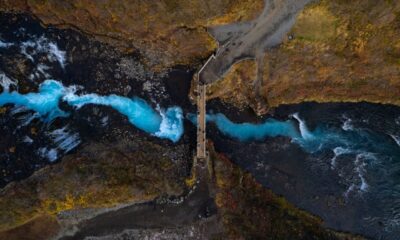
 Health7 months ago
Health7 months agoHow Water Contamination Incidents Can Lead to Widespread Health Crises
-

 Business7 months ago
Business7 months agoUnlocking the Potential of Potassium Humate Fertilizer: Finding the Right Supplier
-

 Culture8 months ago
Culture8 months agoReflecting on the Past: A Comparison of 2023-1954
-

 entertainment8 months ago
entertainment8 months agoJudith Ivey – An Actress with Depth and Versatility
-

 entertainment8 months ago
entertainment8 months agoMadeline Wise: A Breakout Talent in Hollywood
-

 entertainment8 months ago
entertainment8 months agoThe Enchantment of Niles Garden Circus: An Insider’s Perspective
-

 Tech8 months ago
Tech8 months agoDizipal 608: A Comprehensive Guide to the Professional Document Scanner
-

 Other9 months ago
Other9 months agoCBD UK

